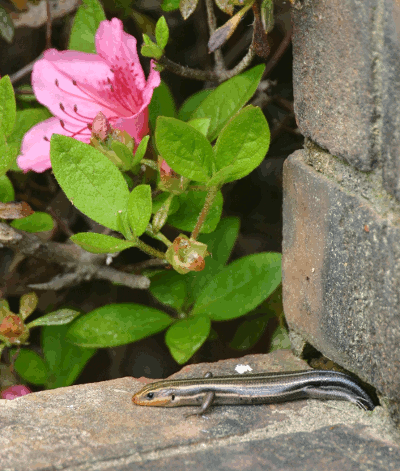
Eight years ago this very day, I was endeavoring not to get bitten while attempting to actually photograph the bitey bits. I succeeded in the former but failed in the latter, still producing this enigmatic (so I say) portrait.
Those red marks are a clue of course, and the fact that they’re markS and not A mark tells you this is the northern variant – specifically, a northern black widow (Latrodectus variolus.) The hourglass on the belly of the northern subspecies is split, broken, divorced, call it what you like, but it’s two marks instead of one, with some additional markings on the back because the northerner is an attention whore. We have both species around here, by the way. What I was trying for were the chelicerae, the fangs, which are remarkably small, tucked tightly to the face, and just as jet black as the rest of the spider (save for the red bits,) which makes them next to impossible to photograph. This was not helped by not having a macro flash rig at this point that was adequate to the job, though it did produce a menacing reflection from two of the eyes, which is perhaps spookier than if it got four or eight reflections. In most circumstances, not being bitten by a black widow is quite easy, because they’re shy and tend to avoid contact enthusiastically, but irritating them like I was doing by trying to get the precise angle needed for the shot is a great way of failing to not be bitten. Some indication of this state of mind of the spider can be seen emanating from the spinnerets: harassed widows will emit a nasty-tasting fluid among their web strands to discourage those that haven’t heard of their normal reputation. Expert that I am, I avoided any taste of that, too.
There’s another reason for posting this image: my cousin’s birthday is today – no kidding – and he’s allergic to spiders. I figured he’d like a closeup of something that he wouldn’t normally get very close to.
 And another, from the exact same day – busy busy busy! (Actually, it’s a very rare day indeed that, if I actually start taking photos, I only photograph one subject.) And technically this is two frames, blended together into an animated gif (pronounced “gesh-TALT”). The sun went behind a cloud while I was shooting, and the two frames were so close together except for the lighting effects that I had to overlay them – a slight tweak in position lined them up perfectly. The appearance and disappearance of the shadows is obvious, but if you look closely, you might also be able to see the color register change, especially if you look at the body of the skink itself (oh, yeah, this is an American five-lined skink again, Plestiodon fasciatus.) The shaded version gets a bit of a blue register to it. I’m used to spotting this now, plus I had the two images side by side in the folders to compare, which is what prompted me to overlay them so it was more obvious, rather than simply showing them alongside one another where the effect might not be as clear to those not used to doing color corrections.
And another, from the exact same day – busy busy busy! (Actually, it’s a very rare day indeed that, if I actually start taking photos, I only photograph one subject.) And technically this is two frames, blended together into an animated gif (pronounced “gesh-TALT”). The sun went behind a cloud while I was shooting, and the two frames were so close together except for the lighting effects that I had to overlay them – a slight tweak in position lined them up perfectly. The appearance and disappearance of the shadows is obvious, but if you look closely, you might also be able to see the color register change, especially if you look at the body of the skink itself (oh, yeah, this is an American five-lined skink again, Plestiodon fasciatus.) The shaded version gets a bit of a blue register to it. I’m used to spotting this now, plus I had the two images side by side in the folders to compare, which is what prompted me to overlay them so it was more obvious, rather than simply showing them alongside one another where the effect might not be as clear to those not used to doing color corrections.



















































